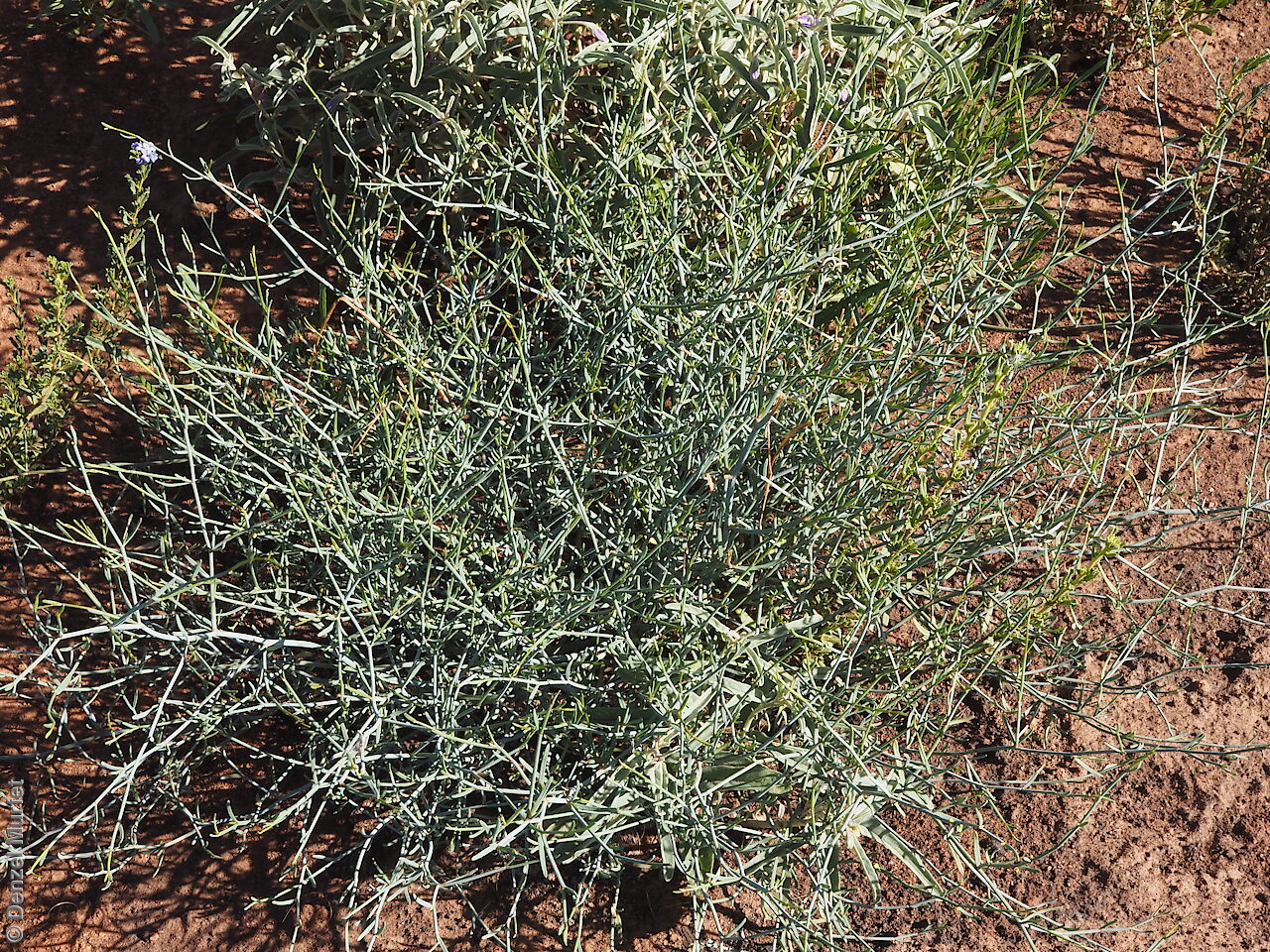
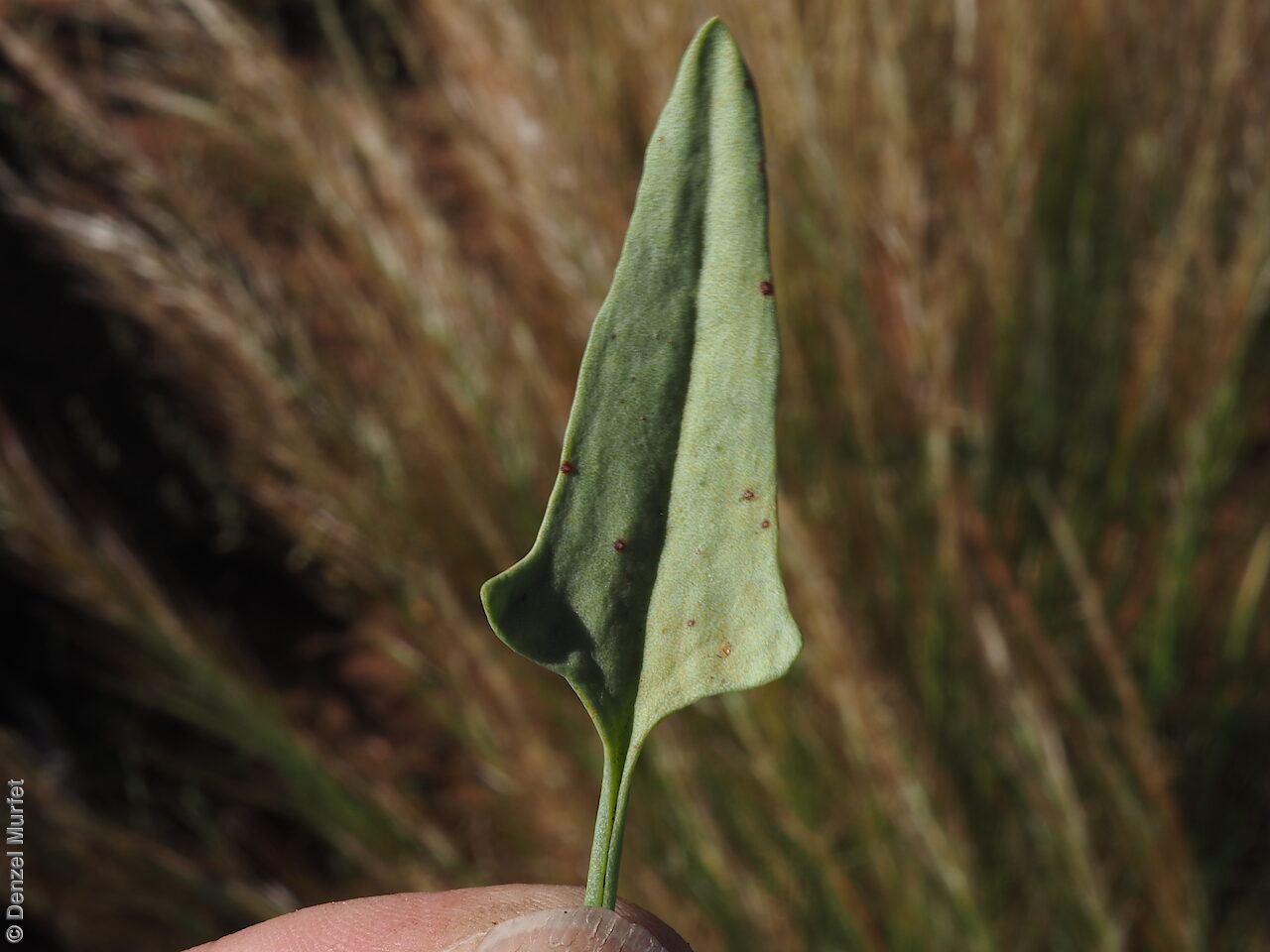
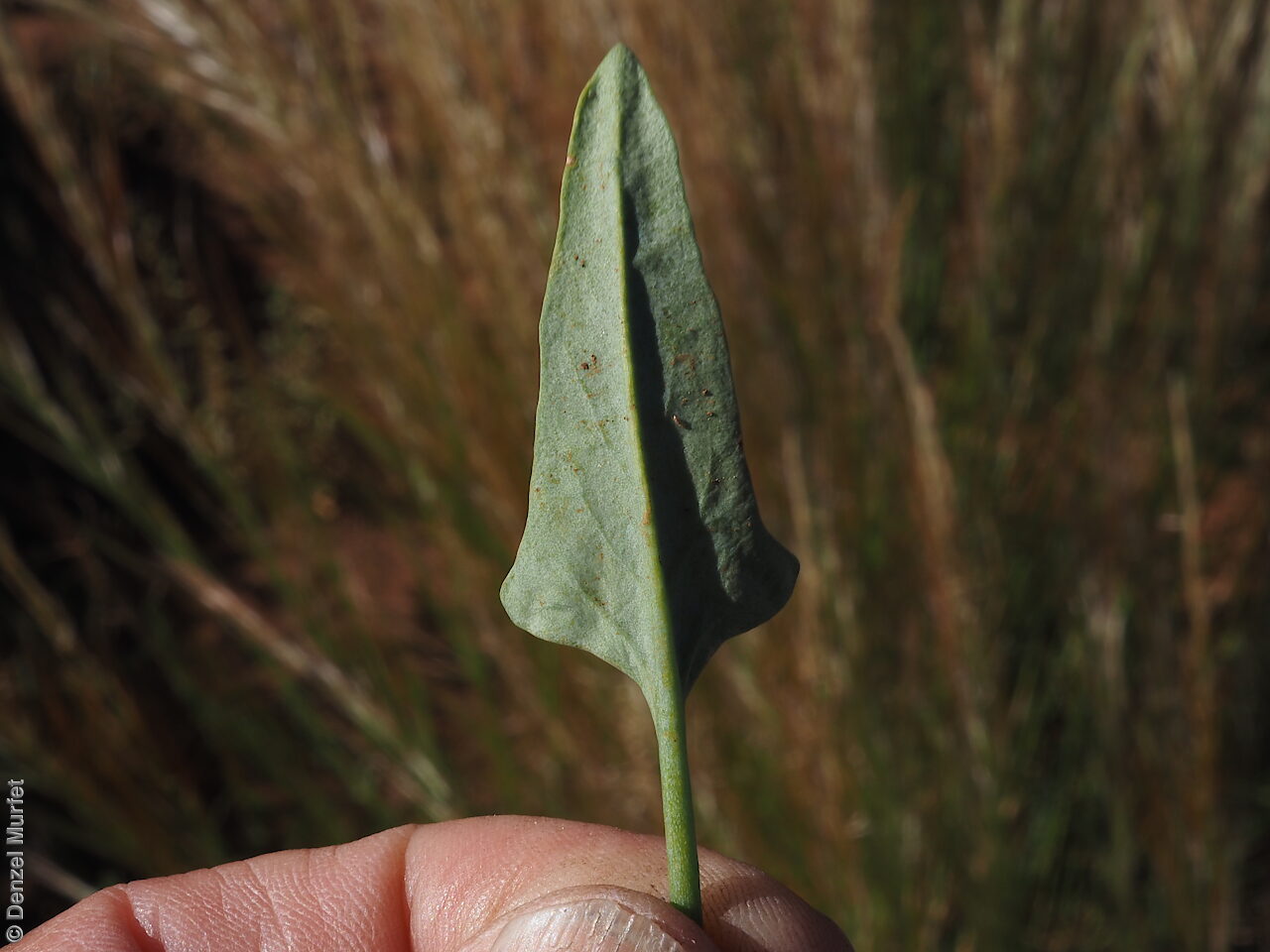
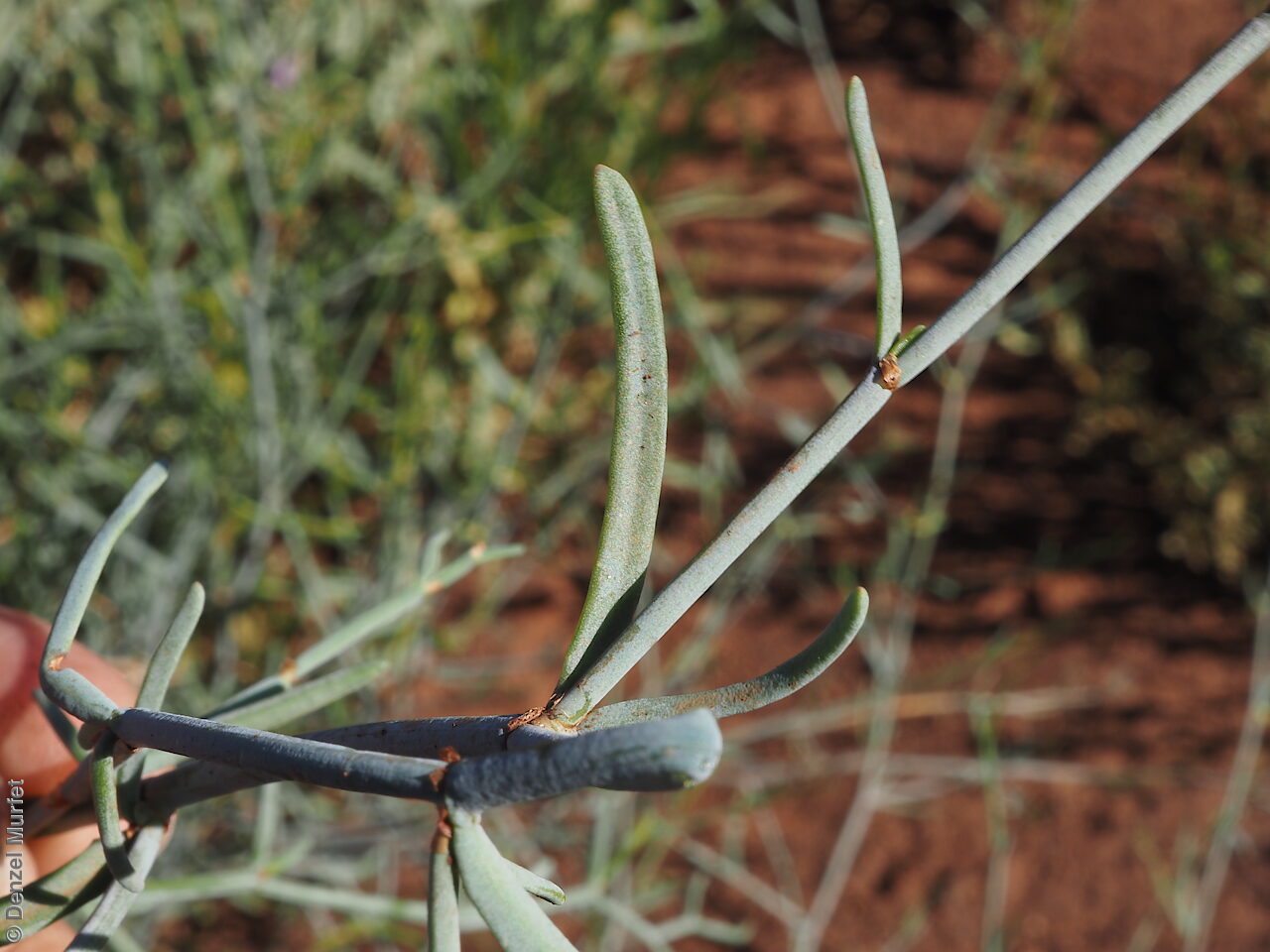
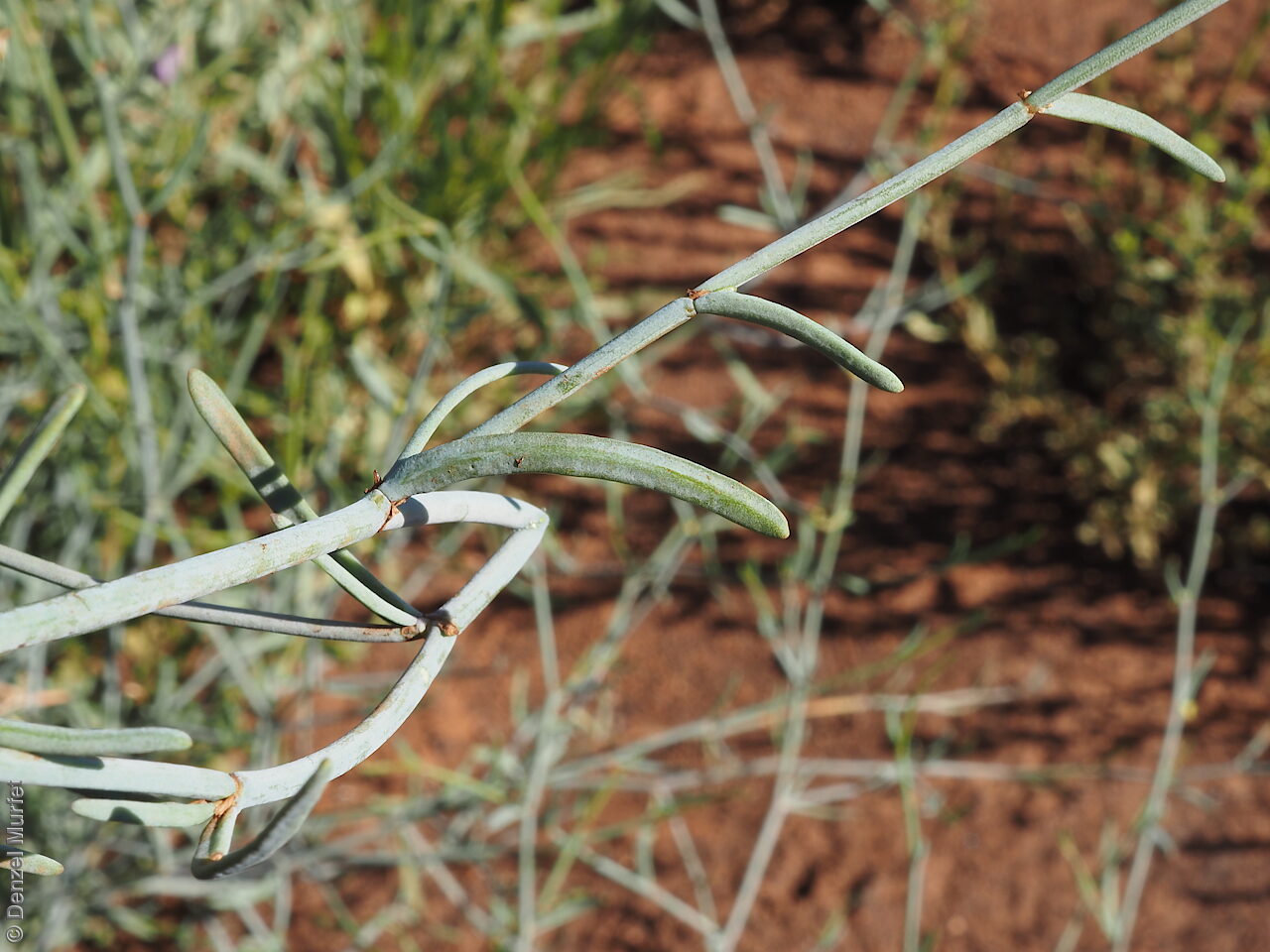
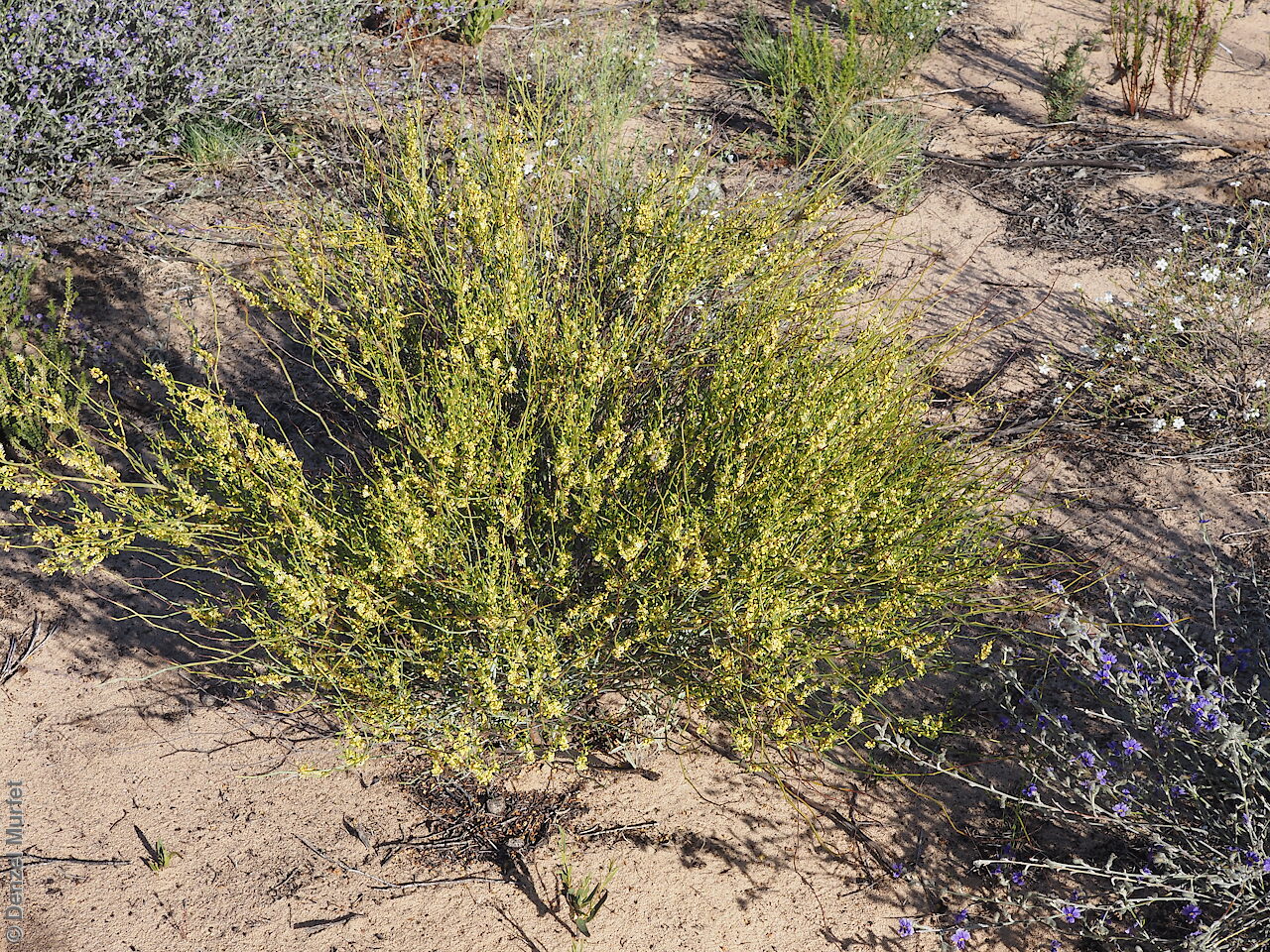
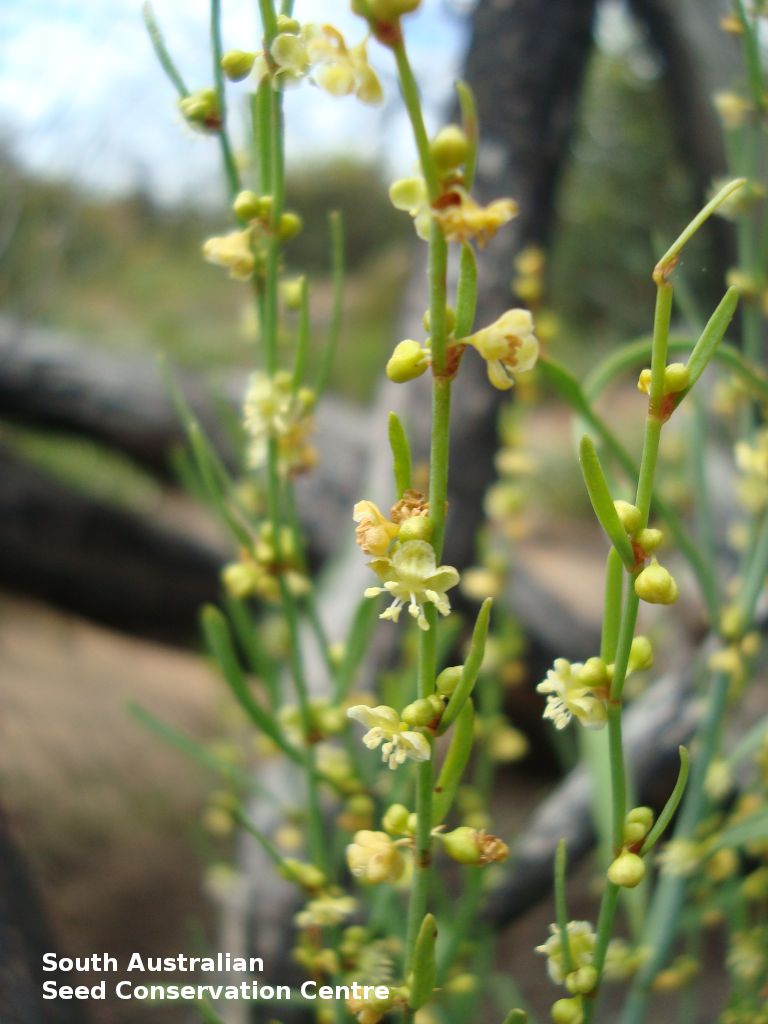
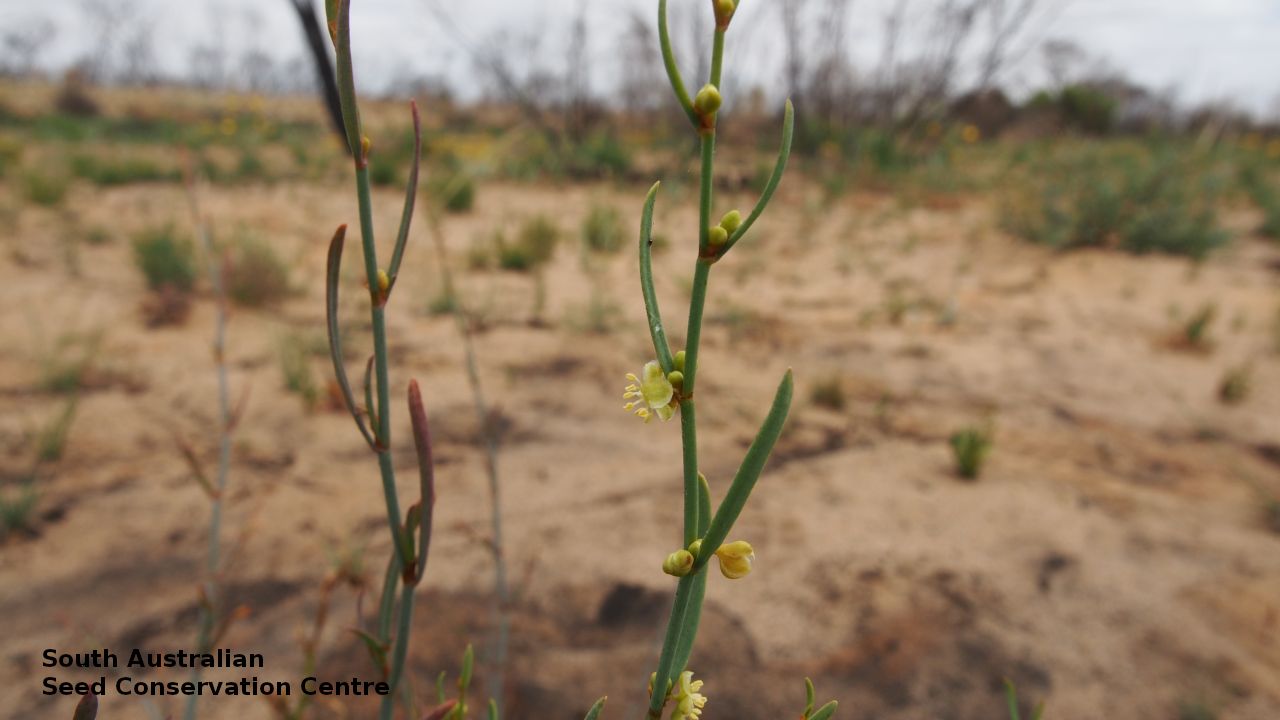
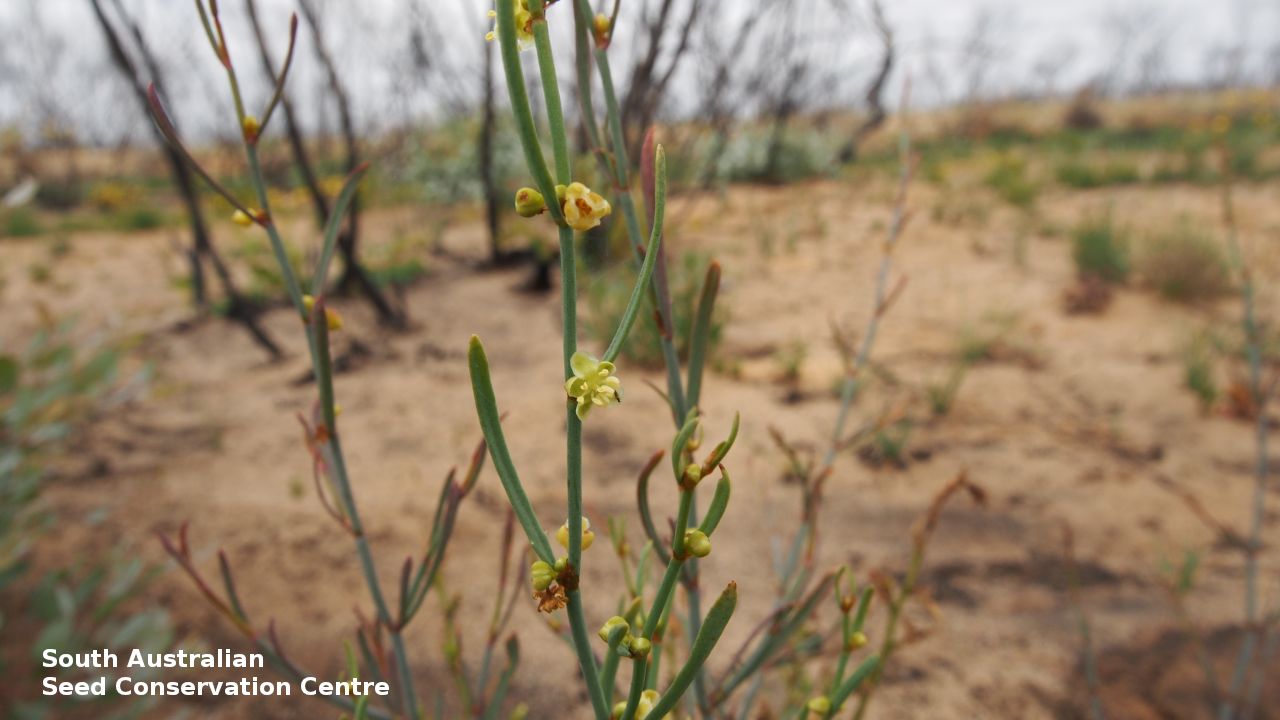
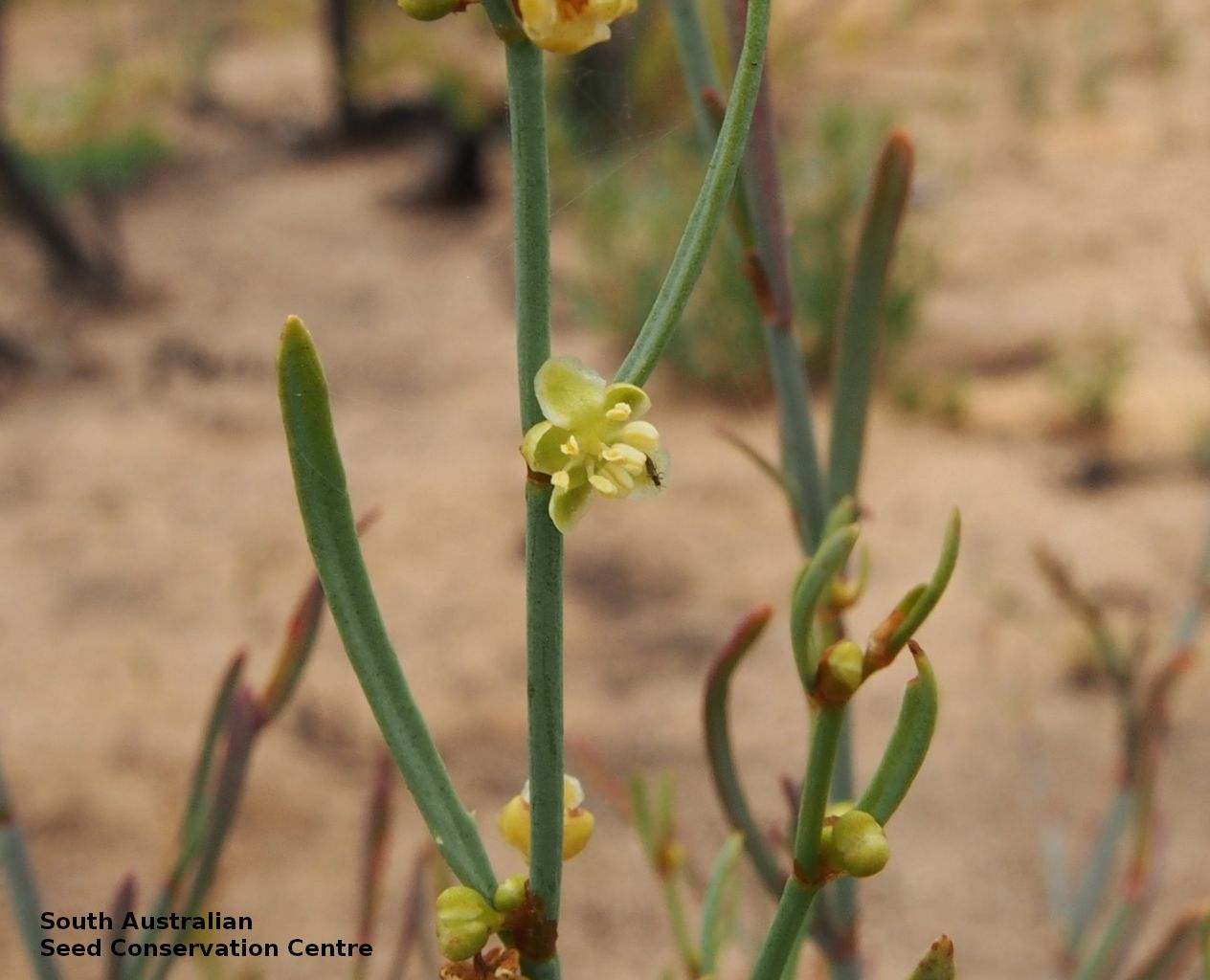
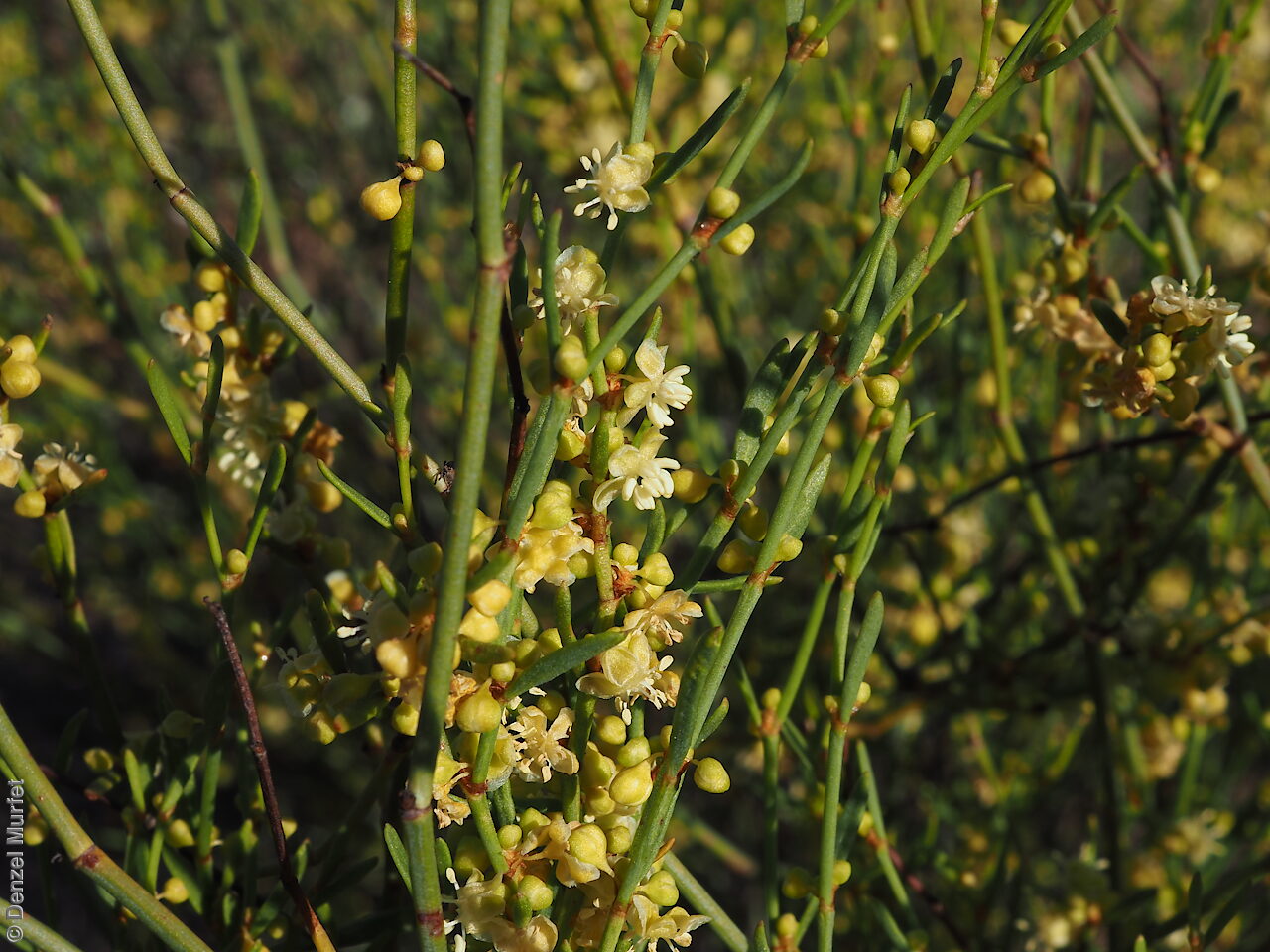
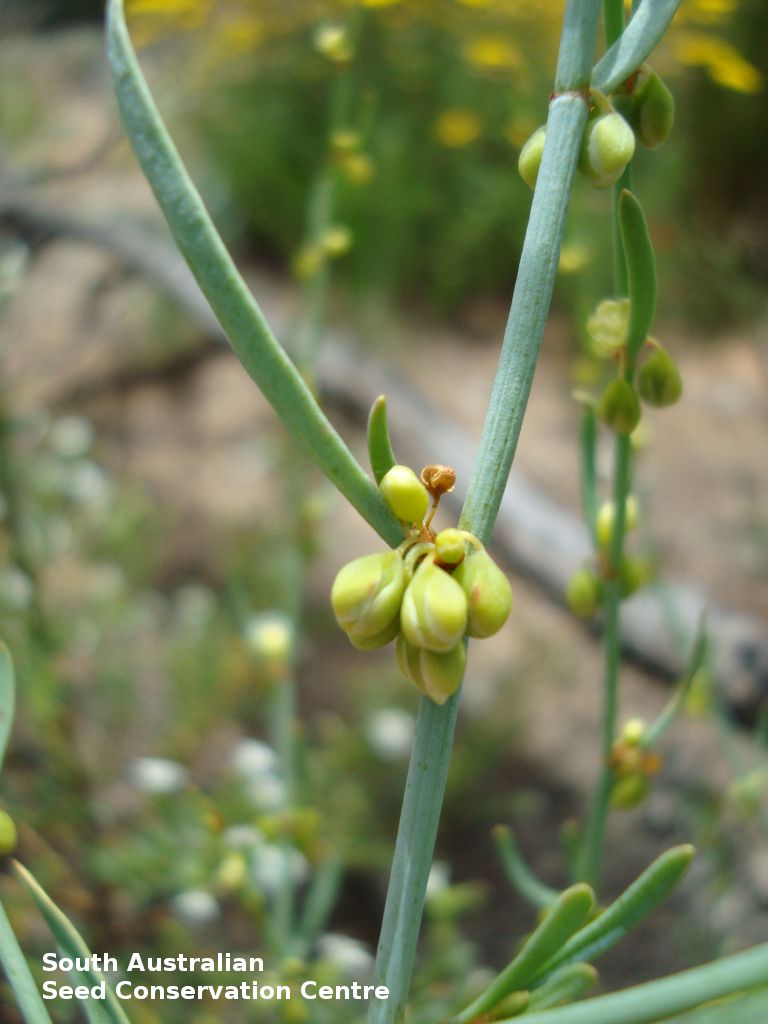
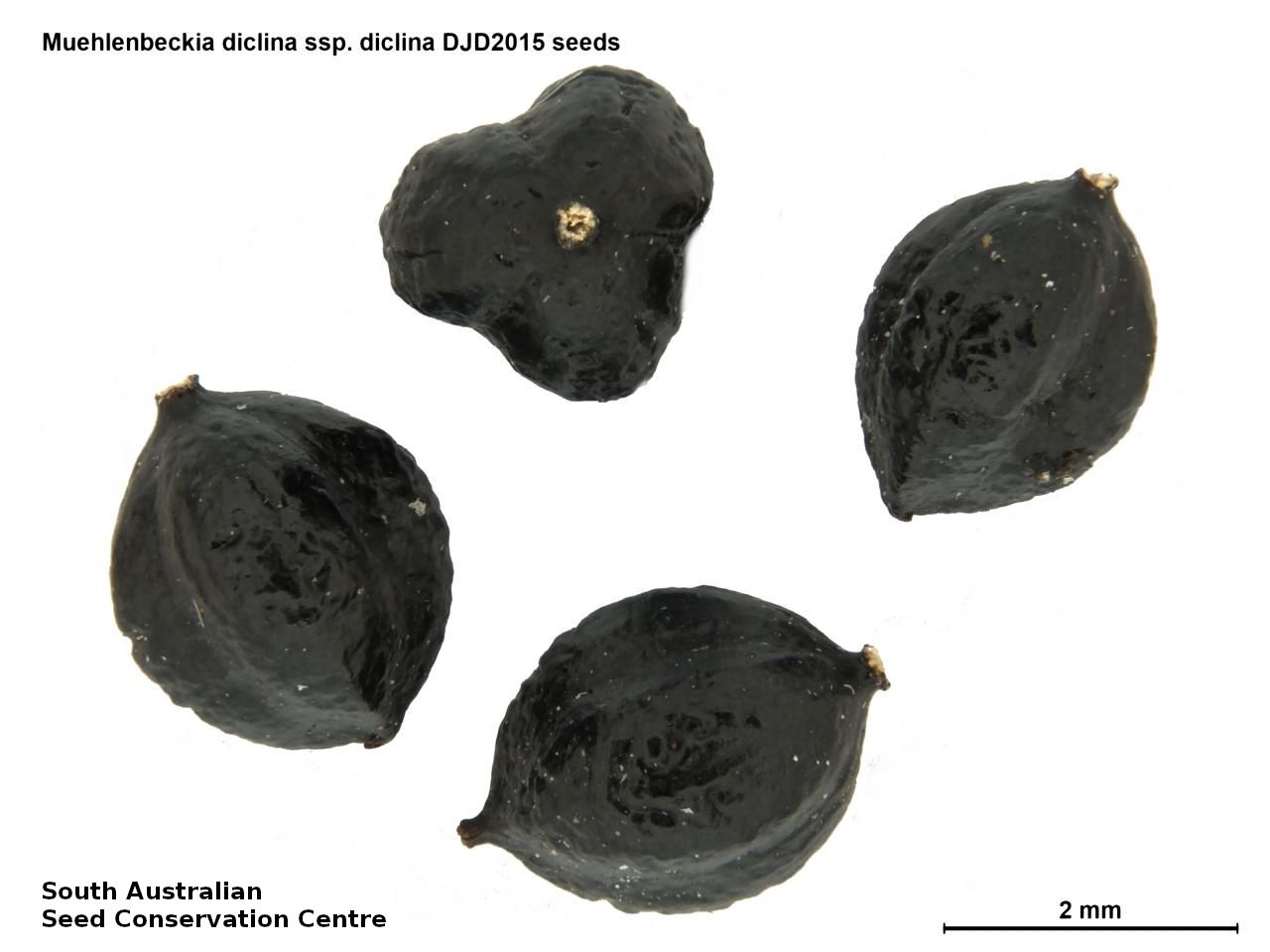
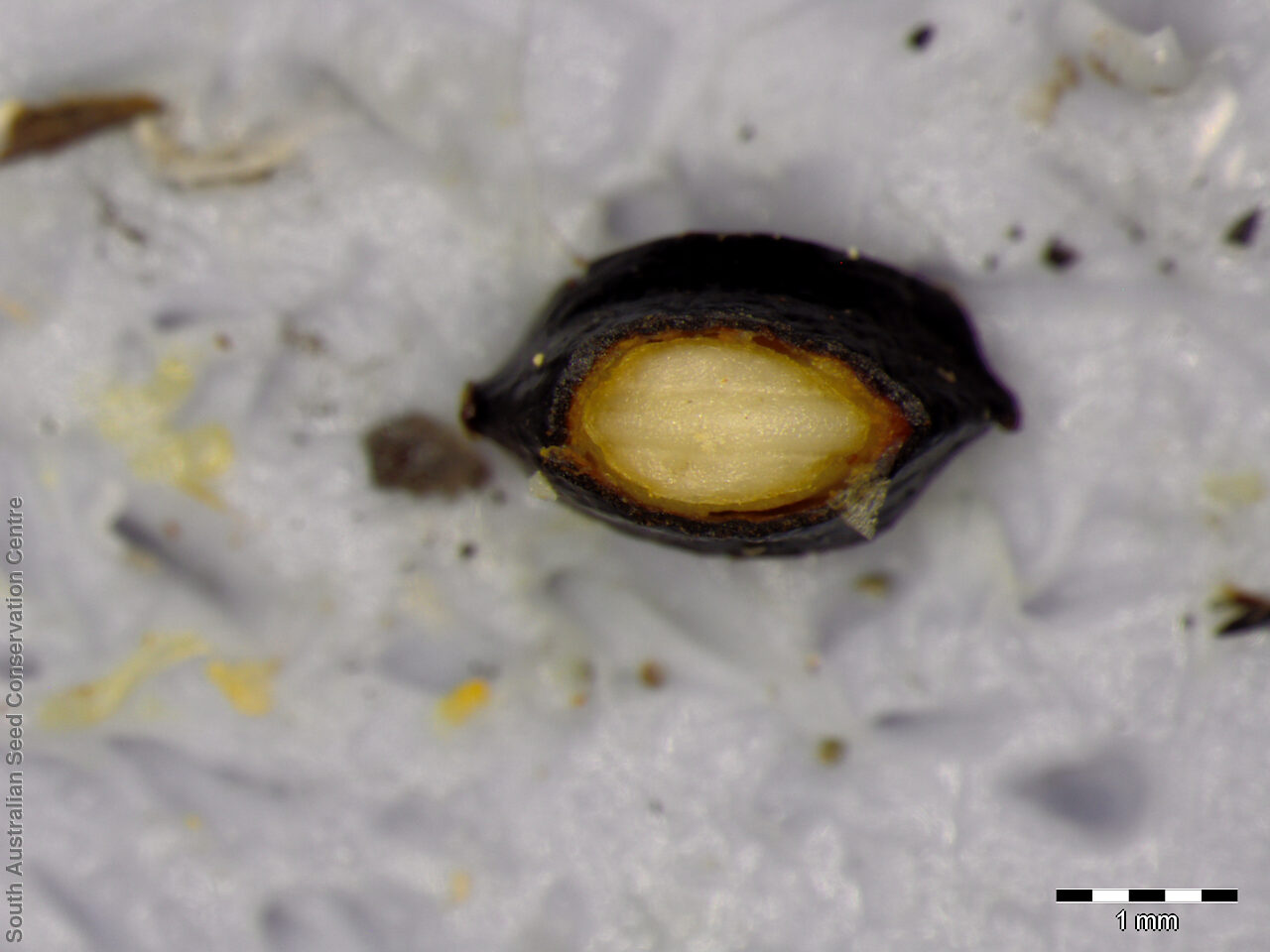
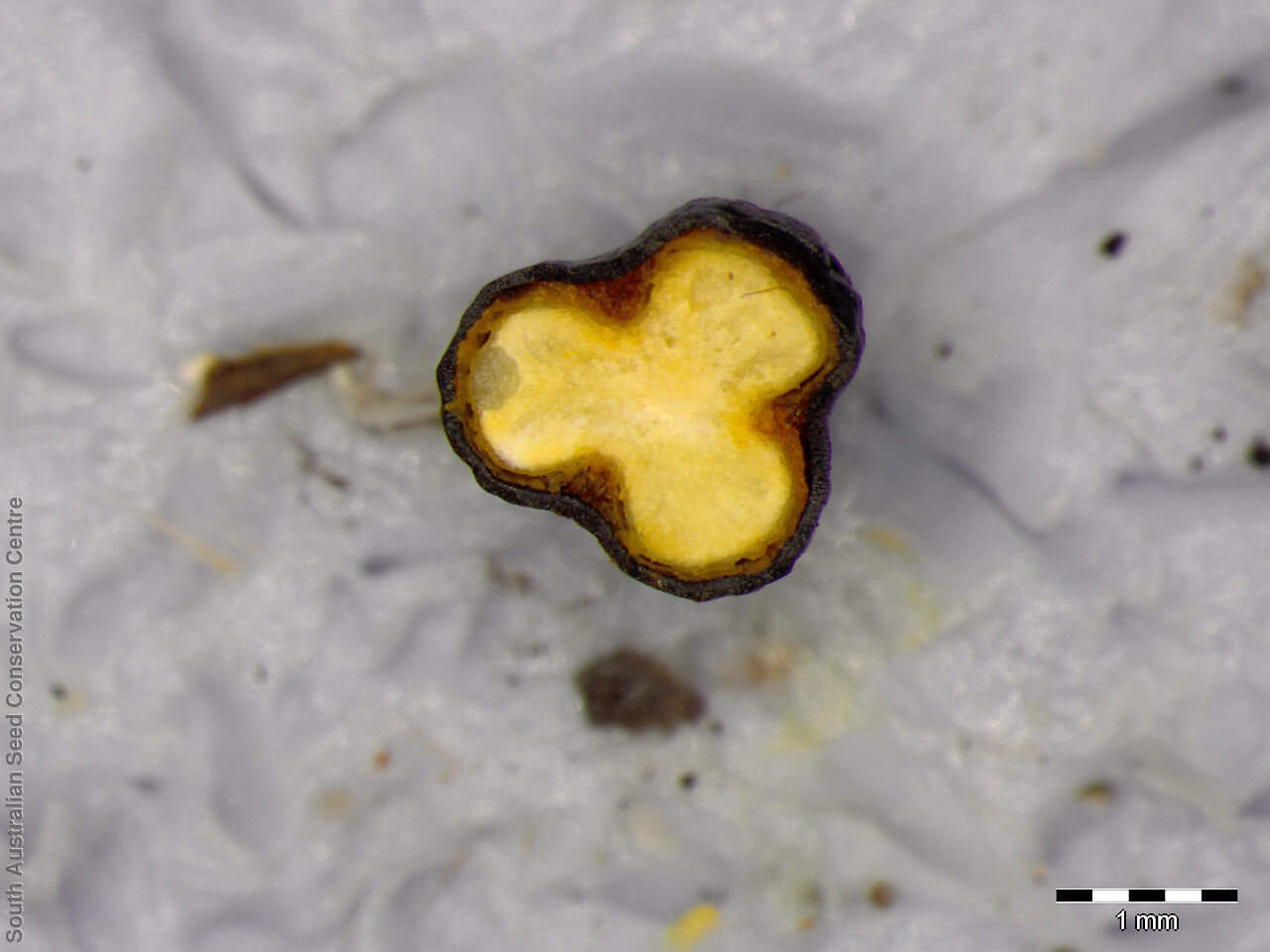
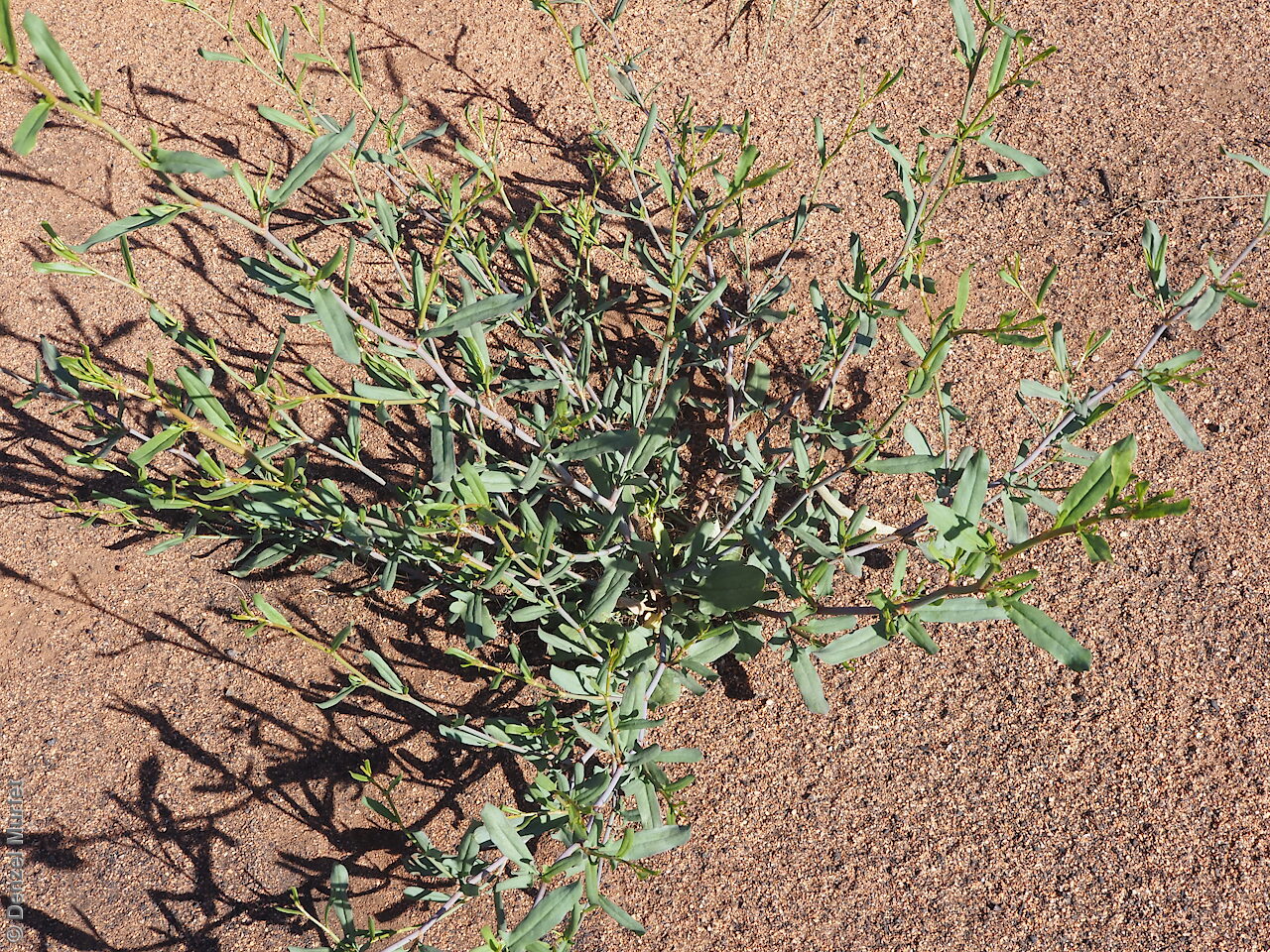

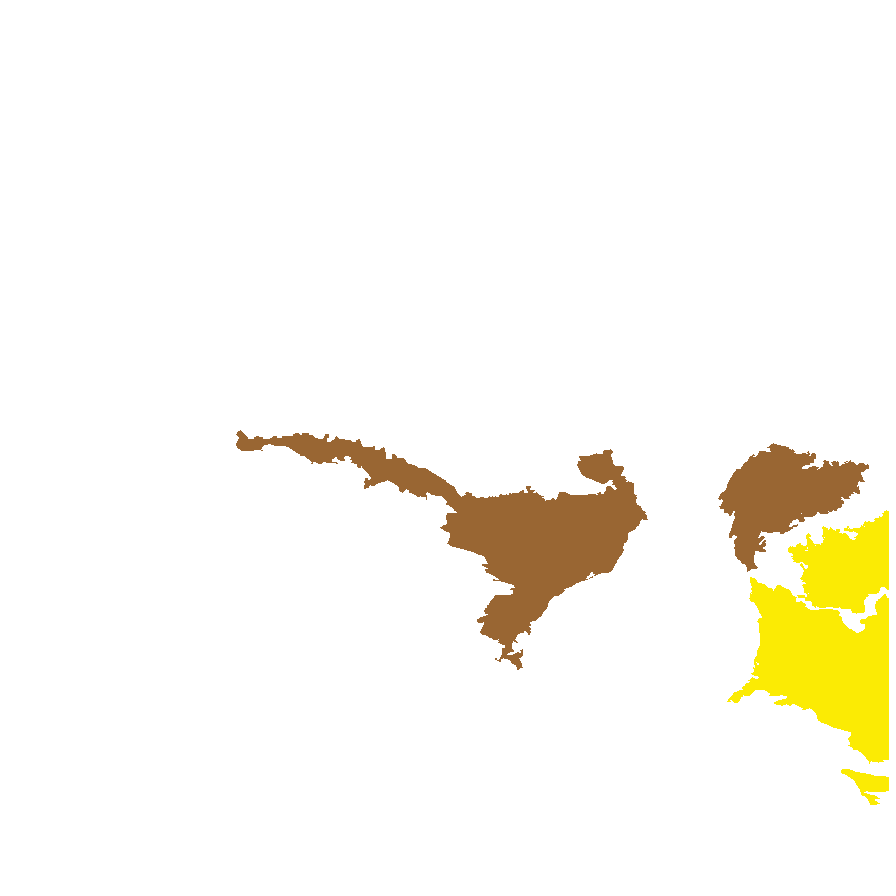
Botanical art
Prior names
Muehlenbeckia diclina
Polygonum diclinum
Common names
Weeping Lignum
Twiggy Lignum
Etymology
Muehlenbec, named after Henri Gustav Muehlenbeck (1798-1845), an Alsatian physician and botanist who investigated the flora of Alsace. Declina, meaning declining number of insect pollinators.
Distribution and status
Found on the eastern Eyre Peninsula and the Murraylands in South Australia growing on sand dunes and flats, often in mallee. Also found in Western Australia, New South Wales and Victoria. Native. Uncommon in South Australia. Uncommon in Western Australia. Common in the other States.
Herbarium regions: Eyre Peninsula, Murray
NRM regions: Eyre Peninsula, South Australian Murray-Darling Basin
AVH map: SA distribution map (external link)
Plant description
Slender erect, open to sprawling shrub to 1 m high, with numerous slender wiry branches. Leaves to 4 cm long and 1 mm wide; lanceolate or linear. Flowers arranged in axillary clusters of 1-3; white, cream, green. Flowering between October and November. Fruits are achene trigonous to sub-globose with lateral furrows; shining, Seeds are black, globose seed to 3 mm long and 2 mm wide; smooth, shiny, with lateral furrows. Seed embryo type is peripheral.
Seed collection and propagation
Collect seeds between November and January. Collect ripening fruits that are turning yellow and containing a hard black seed. Place fruits in a bucket of water and leave to soak overnight, then rub the fruit to remove the flesh. Rub and change the water a few times until all the fresh is removed. Leave the cleaned seed to dry and then store with a desiccant such as dried silica beads or dry rice, in an air tight container in a cool and dry place. From one collection, the seed viability was high, at 90%. Seeds are non-dormant, viable seed should germinate readily.
| Location | No. of seeds (weight grams) | Number of plants | Date collected | Collection number Collection location | Date stored | % Viability | Storage temperature |
|---|---|---|---|---|---|---|---|
| BGA | 850 (4.08 g) | 7-Dec-2010 | DJD2015 Murray | 1-Jan-2012 | 80% | -18°C |
Number of plants: This is the number of plants from which the seeds were collected.
Collection location: The Herbarium of South Australia's region name.
% Viability: Percentage of filled healthy seeds determined by a cut test or x-ray.